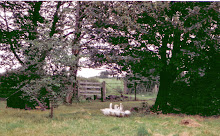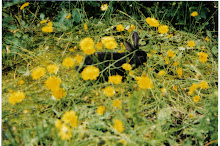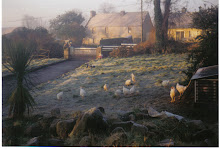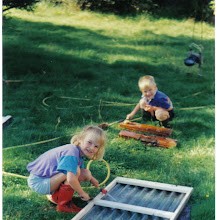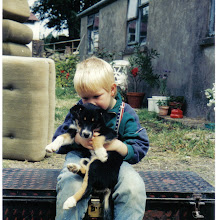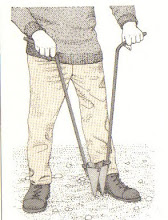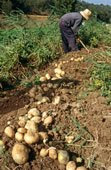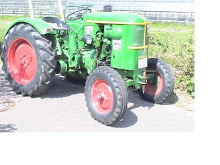
If you bother to grow your own vegetables- and here in Florida the new growing season is under way- you should spend time to make your own compost heap. This photo is the proof that a compost heap does not smell when done correctly : it was my son's and his friend's favorite spots to play at the age of 3. And we lived in a German village among neighbors who would not have tolerated anything untoward.
I'm trying to create one at the moment. You need a container, not the ones you can buy in certain wholesale place that don't have holes. Air needs do go thru it to ventilate. Just rolling the drum / plastic container, as suggested in that store, won't do it. As you can see from the picture a timber construction is easily made, you need a few planks on the ground and an enclosure. Not necessarily for climbing on top...Seymour in his ultimate Self-sufficiency book has different cheap solutions: an old oil drum with holes bored into it,the aforementioned wood structure or an even simpler one with chicken wire/mesh as sides to enclose the compost.You can build one with bricks on three sides and timber planks in the front or an old fashioned silo, depending on your needs.You never have enough good compost. That requires more space and maybe a little tractor or bobcat to handle once it grows. The easiest is if you can open it at the front, ie remove the timber planks and shovel the ripe compost, ie crumbly, healthy earth out that is full of nutrients and life.It's more important what goes in! You start with a layer of twigs, then almost anything that rots goes: leaves, grass clippings, left overs (which are not thrown into the garbage disposal. We fed them to dogs and pigs).Even newspapers, eggshells, bark, fish, avoid bones as the dogs will only dig them out anyway. They also take too long to be transformed into earth by all the microbes that will get to work instantly. In the process of composting, microorganisms break down organic matter and produce carbon dioxide, water, heat, and humus, the relatively stable organic end product. All of that should be alternated by layers of dirt and nitrogen containing material such as bone-meal or fish-meal. Algae or seaweed make an excellent starter, too. Not to forget tea leaves and coffee grounds- even with the filter. Worms love coffee! And then a layer of dung if you have it. You should water it from time to time if rain is lacking. Not a problem in Ireland. The perfect silo has a pointed top so that you can cover it in winter and the rain drops off- once it's ready.
It's ideal to have two heaps going at the same time. One that has matured and can be used and one that is still ripening.
How do you get the materials going and onto that heap? Collect them in a plastic container in the kitchen and carry out each day to throw on your developing heap. Seymour suggests to trample the heap each evening by foot or beat it with a spade...but there are certain limits and it worked just as well without doing that on a regular basis.




























